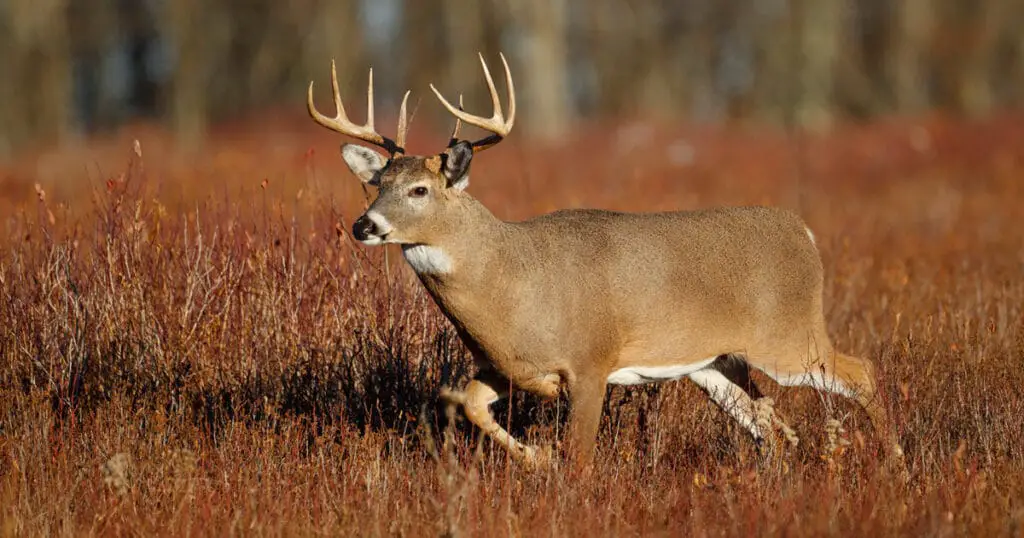Deer hunters often rattle a pair of shed antlers together to mimic the sound of two bucks (male deer) fighting during the rut. This attracts other bucks to the area. If you’re a hunter and you want to attract deer with rattling, you’ve to go know the times of year and times of day you should try this technique. Let’s discover when to rattle for bucks for the best results. You never know, you just might catch the local trophy buck!
The best time of year for rattling to attract bucks is the later part of the pre-rut (breeding season) through to just before the peak of the rut. Rattling at the peak of the rut is usually a waste of time, as male deer probably won’t leave their females at that time.
And what about the best time of day to rattle for bucks? The morning is usually a good time.
Keep reading for more things you’ve got to keep in mind if you want to lure deer with rattling.
Choose the Right Time of Year for Rattling
Start rattling for bucks in the pre-rut season, and continue doing it until just before the peak of the rut (mating season).
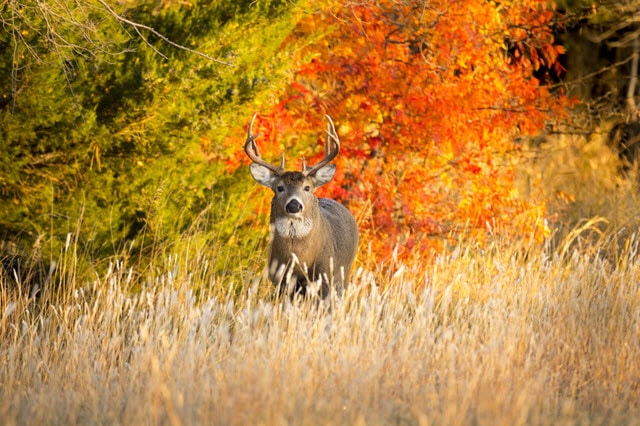
It’s at these times of year that bucks are still competing with each other, vying for territory, and looking for receptive does. And this is exactly when they’ll be most responsive to your rattling.
Most hunters find morning to be the best time to rattle. Deer are typically most alert and inquisitive in those hours, and after a nice cup of coffee you probably will be too.
Rattle the Right Way
Now you know the best time to rattle, let’s find out how to do it.
You first need to understand where deer live, or their preferred habitat. This will give you an idea of where deer might be.
When you rattle for deer, you’re tricking bucks into thinking that the noise is coming from other bucks being territorial in the area. This will bring them in to investigate. Deer make a variety of sounds and noises and this is one that just about any deer in the area will recognize.
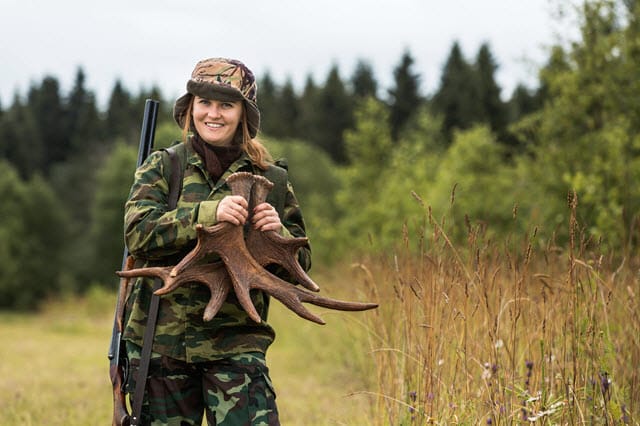
To make a realistic rattling sound, use either:
- real antlers, or
- rattling devices (such as rattle calls and rattle bags)
The sounds you make should sound like knocking, and be similar to when bucks clash with their antlers.
Consider the Wind
Think about wind direction, ensuring you get downwind from where bucks are likely to be. This way, they’re more likely to come to you without detecting your presence.
Remember, the bucks will come and look for the source of the sound. So, you must conceal yourself. If you don’t, they will see you and run away. Understanding deer vision and that deer are not color blind, but can see some colors and fabrics better than others.
How Long Will it Take?
When you rattle in the right way and in a buck’s hearing range, you should see him appear within a maximum of 10 minutes. If you don’t, that probably means that you’re in the wrong place. It’s also possible that you’ve chosen the wrong time of year.
For example, you may be rattling at a time when bucks don’t care if they hear a rattling noise and won’t come to see its origins. This might be before the pre-rut, or perhaps too far into the rutting season.
If you’re trying rattling during the peak part of the rut, you will have to be louder. This is your only chance of getting the attention of male deer. But don’t count on success.
Most bucks are already attached to females at this time, and they don’t want to leave them.
Use Short Rattling Sequences
Each rattling sequence should last about two minutes. When setting out your rattling sequence, think about the rattling sounds created when bucks engage with their antlers during territorial battle.
You should split your rattling sequence into short segments, usually about 90 seconds each. Leave about five or ten seconds between each segment. This makes it more realistic.
If you’re not sure about rhythm and timing, watch some footage of bucks in combat, or a video of an experienced rattler.
Some hunters will grunt and make other noises before they start rattling, to add to the realism.
Once you’ve finished one rattling sequence, you should usually wait about 30 minutes before moving on to another one.
Other Tips for Antler Rattling Success
Here are some additional essential rattling rules.
Keep the Right Distance
Deer are prey animals, with finely honed senses of hearing and smell. As a result, a deer may hear loud rattling as far as half a mile away.
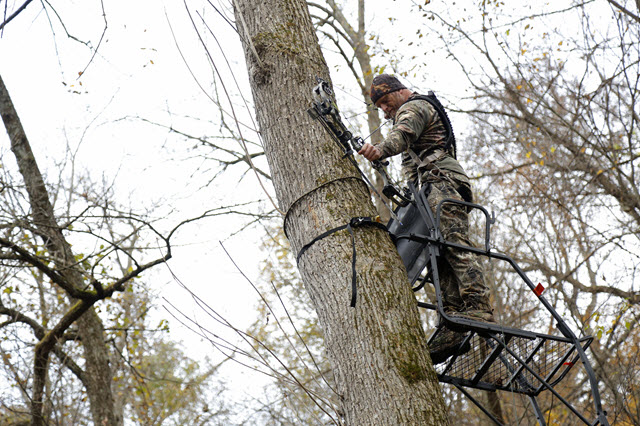
As a hunter, you’re a predator. Deer will do everything they can to find out you’re there before you can hurt them.
Don’t Rattle Too Often
Overdoing it may cause bucks to become desensitized to the noise and stop being curious and wanting to see where it’s coming from.
During the pre-rut period, you could try going out and rattling every morning. This will be believable for deer, and in the early hours of the day, bucks are more likely to come and investigate.
Frequently Asked Questions (FAQs)
Let’s take a look at some of the most frequently asked questions about rattling for bucks.
Will deer smell you when you’re rattling?
As prey animals, cervids have an impressive sense of smell. If you don’t take precautions, deer may well detect you. In some cases, a buck will be able to smell you as far away as 400 feet.
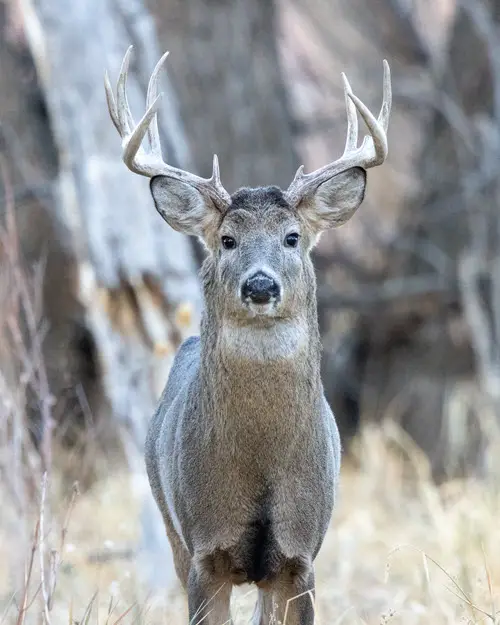
The deer’s sense of smell is one of the main reasons you must consider wind direction. You don’t want the wind to bring your scent to deer in the area. When deciding where to position yourself for rattling, make an informed judgment about where the bucks you want to lure are likely to be.
Are trophy bucks harder to trick?
Hoping to catch a trophy buck? You’ll have to be even more careful to get things right.
Some hunters believe that the older (and larger) bucks (in other words, the trophy bucks) are smarter and more difficult to trick. And this seems to be true.
It makes sense, as they have the benefit of experience. Trophy bucks will probably be wary and aware of the danger posed by humans, especially if their terrain has heavy hunting pressure.
In other words, for a deer to reach the age and size to become a trophy buck, they must survive several years and probably witness scenarios where human hunters pose danger.
What is the best weather for rattling?
Many experts recommend rattling during cool weather, if possible. In general, you’re more likely to be successful with hunting bucks. Avoid rattling on overly windy days.
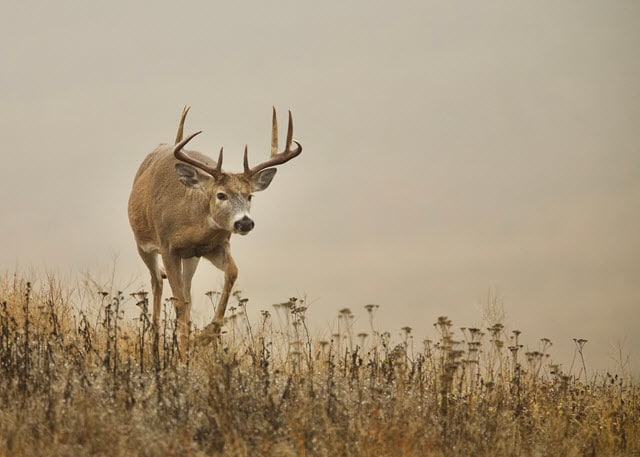
If there are strong winds, the bucks are less likely to hear your rattling.
If there is a breeze, ensure that you’re positioned so that it won’t carry your scent to where bucks are likely to be in the area.
Also, try to position yourself so that the sun is behind you. This isn’t as crucial as considering wind direction, but it may help. When the sun is behind you, it won’t interfere with your vision but it may help obscure what an oncoming buck can see.
Even with this advantage, though, you should always be mindful to stay hidden.
How do I get antlers to use for rattling?
If you want to use real antlers for rattling, you can use shed ones. Bucks lose their antlers once a year. This will only work if you use relatively fresh sheds. Shed antlers dry out over time, and when they get too dry, they won’t create the sound you need.
Look for antlers in what you believe are home ranges for bucks. Some of the most common places where deer leave their sheds include their bedding areas, feeding areas, and travel routes.
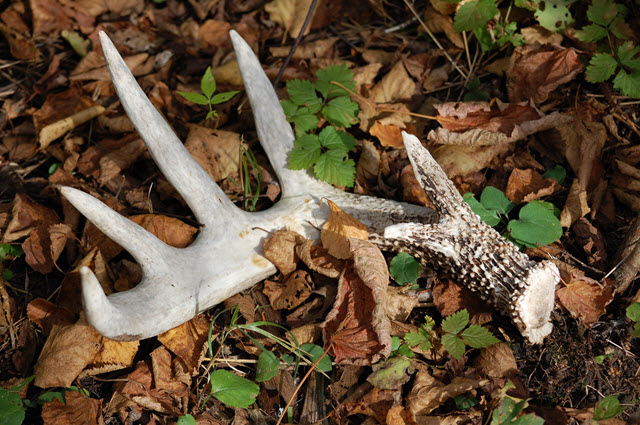
The best months for finding shed antlers are in February and March. You will occasionally be able to find them earlier, however, even in early January. Most shed hunters will go looking for the antlers in March and April.
Final Thoughts About When to Rattle for Bucks
As we’ve explained today, the best time to rattle for bucks is in the pre-rut and early rut periods. It’s probably a waste of time to try this once the peak rut starts.
Bucks are most likely to come in your direction and investigate in the morning hours, so that’s when you should rattle. A cool morning with minimal wind is ideal.

